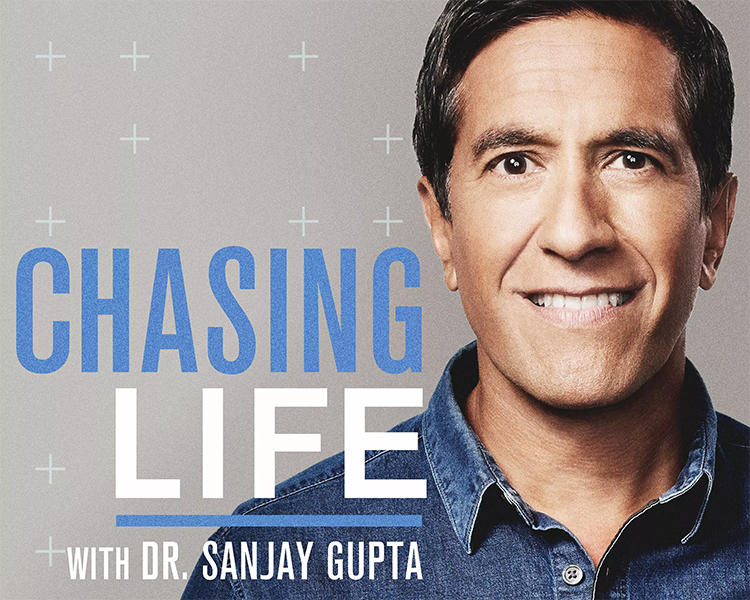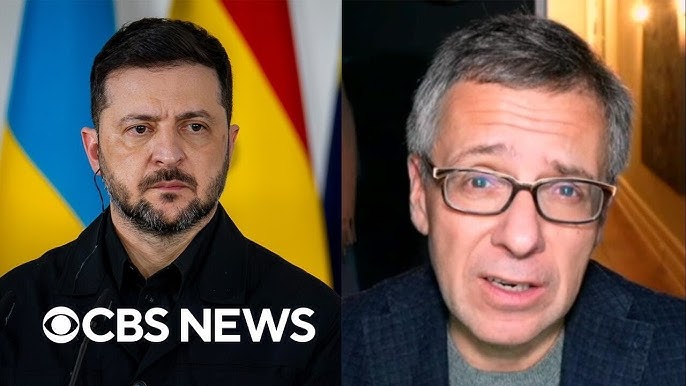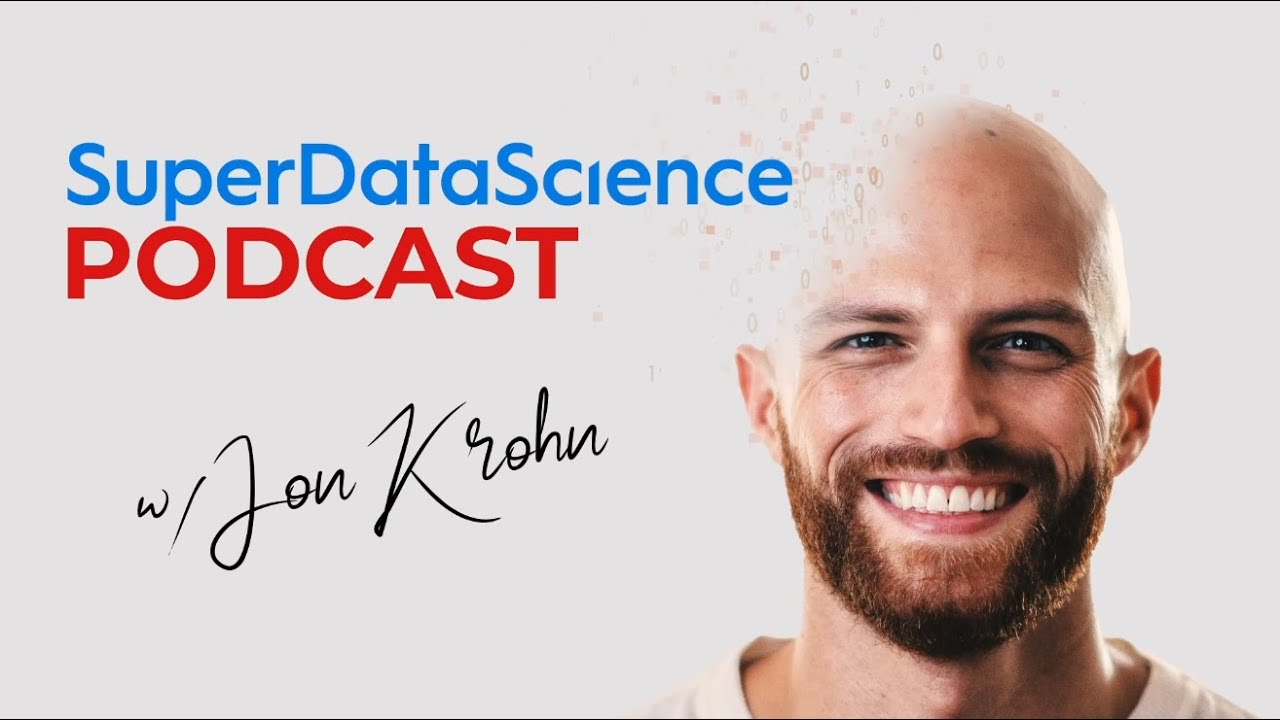
Creative human-AI partnerships and AI-generated music: WaveAI CEO and co-founder Maya Ackerman speaks with Jon Krohn about learning to see – and accept – AI’s…
Thought Leader: Jon Krohn
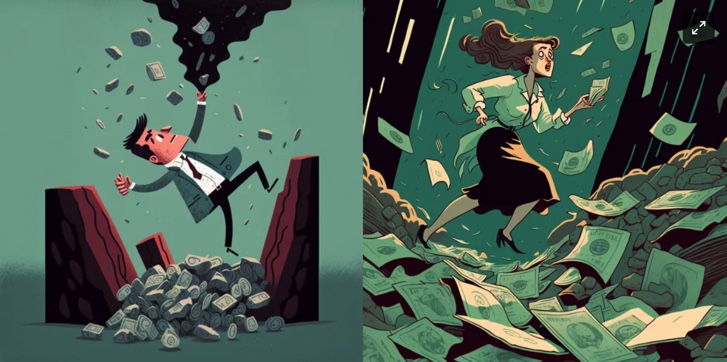
👋🏽 Hi friends!
This week, I want to dive into a new concept I’ve termed “FOZO”, how FOZO is influencing VC, startup and wider market behavior, and what I predict will happen to startups in 2023.
I also want to talk about how my former employer is now using A.I. to write articles and how this is the beginning of a difficult trend.
A week or two ago, I went viral — both on Twitter and on LinkedIn — for a post about VC “dry powder” and how the idea that there’s $300 billion just waiting to be invested in startups is B.S.
It garnered… a lot of reactions.
I made the argument that VCs (venture capitalists) are afraid to deploy much of that capital right now for a number of reasons, including that LPs (a VC’s investors) are tapped out and that the market hasn’t recovered.
(I’m not the only one pointing this out — SaaStr’s Jason Lemkin has a great post pointing this out as well.)
But honestly, there’s just one thing driving VC behavior in the current market: FOZO. The Fear of Zeroing Out.
It isn’t just VCs though. FOZO is heavily driving startup behavior, founder behavior, executive behavior, and societal behavior.
A year ago, FOMO reigned supreme. Today, we’re in a FOZO cycle. And that’s okay.
Every week or two, like clockwork, my co-founder Matt Schlicht and I will meet a founder looking for us to advise them on their fundraise. They’ll tell us they’re pre-launch and raising a pre-seed $1.5m round on a SAFE note (an investment agreement that turns into startup equity in a future round) with a $12m valuation cap. Or they’ll tell us they’re raising at 50x their ARR (annualized recurring revenue).
Matt and I immediately tell them to cut all their numbers in half. Or more. Raise half that amount. Cut the valuation. Don’t shoot yourself in the foot out of the fundraising gate.
I then point them to this tweet thread by my longtime friend Matt Mickiewicz — angel investor and co-founder of 99designs & Hired.com:
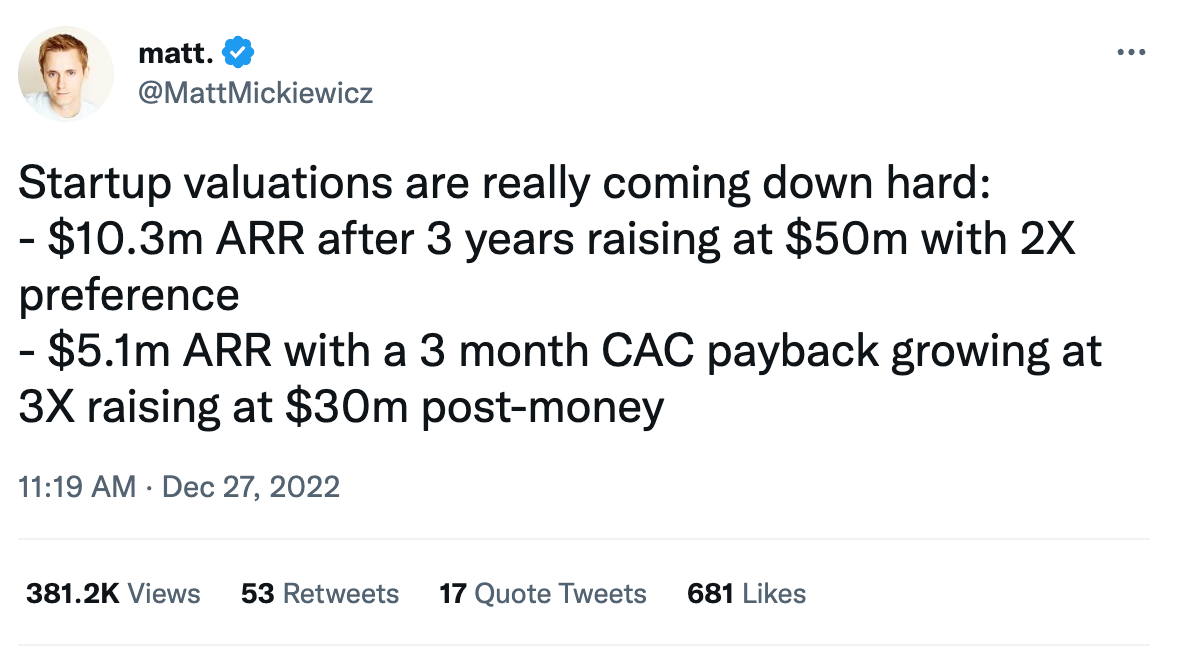
The multiples and valuations are MUCH different now than they were a year ago. I wouldn’t have been surprised to hear a 10.3m ARR company raise at $103m or $206m. Hell, in 2021, I saw startups raising at 40x+ ARR and with pre-seed valuations at $20m+.
The drastic flip has a hard economic component and an emotional component. The economic component is simple — public market multiples for tech companies have tanked. VCs can’t get the same crazy financial outcomes they could a year ago unless they drastically lower the valuations they invest at (with rare exception or two).
The emotional component, though, is much less discussed, but just as important (if not more important) to understanding the current market’s behavior.
Because of 1) the high-flying exits of the last decade and 2) easy money due to 0% interest rates, investors — motivated by keeping their jobs, money and prestige (in addition to helping bring a great idea to life and loving working with smart founders) — embraced the Fear of Missing Out.
What did it say about your skills as an investor if you had turned down the next Airbnb, Facebook, Uber or Snowflake?
VC was (and still is) a game of home runs — you need some.
By the end of 2022 though, the incentives flipped. Thanks to higher interest rates, LPs can get a good return on their money in other, much safer investments (e.g. bonds). And with the market downturn, there aren’t a lot of good options for VCs or VC-backed startups. IPOs are almost nonexistent right now (not to mention the death of the SPAC), and anything getting acquired is usually at a lower multiple that the original investment.
This is when FOMO started getting replaced by FOZO. They are two sides of the same trend.
Here’s what it looks like:

Some key points here:
This trend informs the behavior that both founders and VCs are taking right now. For VCs, they should wait for better prices (although holding too long means missing the boat).
For founders, it means waiting until the market rises again — although waiting too long may mean death by burn, new competition or anemic growth. This is the difficult balancing act founders have to accomplish.
For months, I’ve heard everyone predict everything from a brief correction similar to Q2 2020 to a brutal multi-year recession. Honestly, I heard more predictions of the latter.
Why predict a small natural disaster when you can predict armageddon? People have loved predicting armageddons since the beginning of time.
But we’re starting to get some clarity on the market. All the economic headlines this last week were the same:
Short of a profound escalation of war or an epic natural disaster, the market is on track to “soft land” — no giant recession needed to tame inflation. (In fact, the inflation reports today showed even more encouraging news.)
It also means that the market will start to recover its losses as prices stabilize and interest rate hikes stop and even reverse.
That means higher public multiples, a re-opened IPO window, and renewed interest in companies with high growth potential (and greater FOMO among LPs who want to invest in more VC funds!)
It won’t be the same as before (the memory of this downturn will be seared into founders and VCs, who will hold onto cash more tightly), but it does mean the bottom for startup valuations might be coming to an end.
The soft landing won’t be overnight though. You might have to wait until Q3 or Q4 2023 or even early 2024 to experience this market shift. And while VCs will be careful to deploy their $300 billion in dry powder right now, they will both want (and need) to deploy it when they sense the market is turning. You don’t want to be the one who missed investing at the bottom (FOMO).
On the FOMO-FOZO graph, we are probably near the market bottom. Upcoming inflation reports will have a big impact. And market bottoms can last for several quarters. But if inflation is tamed and jobs are still being created, investment will kick up.
It’s just the law of FOMO-FOZO.
This means only one thing for startups — survive until the FOMO cycle returns. You won’t get the valuations you would get in 2021, but they won’t be anywhere as brutal as they have been in the last quarter or two. And if you’re a seed founder, it’s okay to raise — you just won’t get the same crazy terms you did in 2021.

See all the above rules I stated about the market and FOZO? Yeah, throw that out the window when it comes to A.I.
Market-altering technology only comes once a decade. The iPhone sparked the creation of hundreds (thousands?) of multi-billion dollar companies, from Tinder to Shopify to Uber. You just can’t swipe right on a BlackBerry or make an easy online purchase with a Palm Pilot.
A.I. (especially generative A.I.) has the same potential — a new class of products and apps using A.I. to make people’s lives significantly easier. A new technology that every existing company has to adopt or face destruction.
If you’re a VC and you believe that A.I. could provide the same shift the iPhone did, then it’s logical that 1) own a piece of the infrastructure behind the A.I. revolution and 2) own a piece of the top companies built on top of that infrastructure.
Wouldn’t you want to own a piece of both Apple and Shopify if you were a VC? This is why you’re currently seeing HUGE valuations for top A.I. infrastructure companies. There are limited bets to make on the infrastructure side — and those are already happening in big ways.
(Skepticism is also warranted, as the hype around generative A.I. has become deafening. I’m a believer, but I’m still reading Gary Marcus for his thoughtful and skeptical takes.)
On the “app” side of the A.I. ecosystem: VCs I talk to say they’re generally waiting to see who will emerge as the winners before making big bets. The #1 thing they value right now though is whether or not you were working on A.I. before the hype cycle.
Bandwagoners often come and go, but true believers saw the potential years before the hype.
I’ll be publishing my more A.I.-specific predictions in a major publication very soon. Bur I will email them out here!
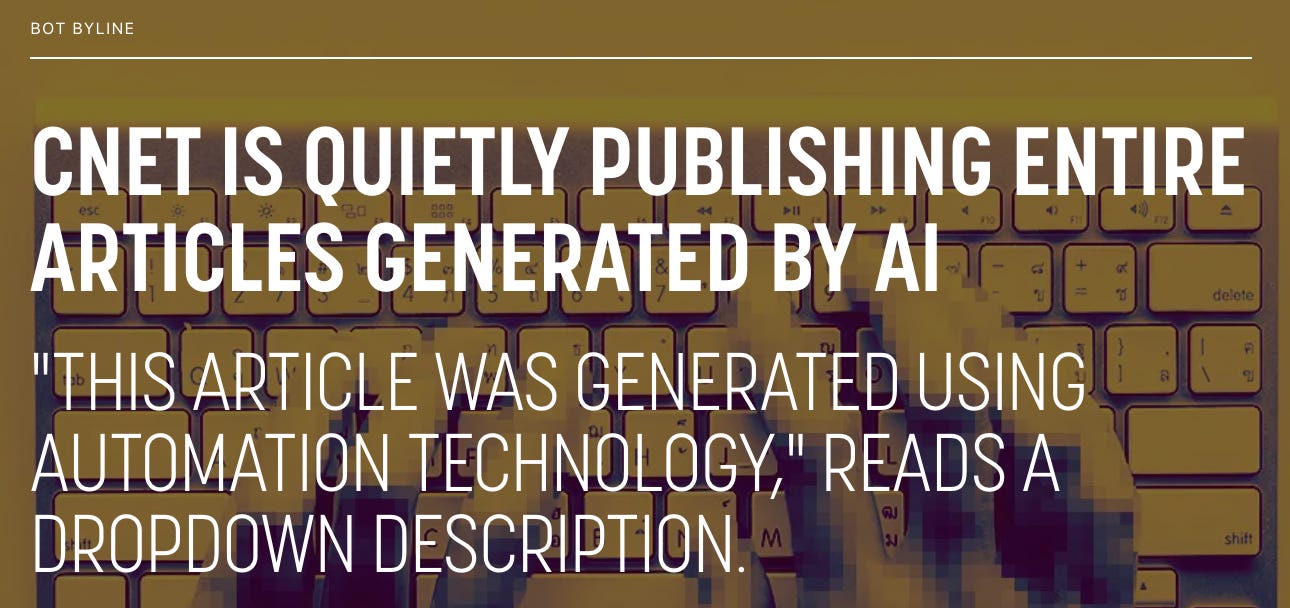
As some of you know, after Mashable, I spent a year-and-a-half as a columnist and commentator for CNET. Specifically, I wrote The Social Analyst for them, starting in 2012. I’m still thankful to Jim Lanzone (now CEO of Yahoo) for reaching out to me giving me the opportunity to continue my column at CNET.
If ChatGPT had existed back then though, I don’t think CNET would have hired me, because CNET is now employing A.I. (they call it “automated technology”) to write articles for them. It’s written over 70 articles on finance about topics like “What Is Zelle and How Does It Work?”
This isn’t new, of course. A.I. has been writing news articles for years, especially local news articles for things like Little League games, which only require adding and removing stats and names to make sense. The AP even wrote an excellent report on A.I. in local news last year that I highly recommend.
Still, it’s shocking (if not surprising) that a tech publication as prominent as CNET (now owned by Red Ventures) is experimenting with A.I.-generated content. Honestly, I give them (a small amount of) credit for even having the disclosure, because I suspect hundreds of other websites have no such disclosure, including well-known publications.
As companies look to cut costs, publications will follow in CNET’s footsteps. It’s a scary and uneasy time to be a journalist. I fear that A.I. will eat into writing jobs in a significant way.
If you’re interested in a deeper dive on A.I. and journalism, I recorded an in-depth video essay on the topic on my TikTok.
I also recommend reading my partner Deborah Yarchun’s play Atlas, the Lonely Gibbon, a dark comedic thriller that explores the struggles and troubles of two journalists, one of whom loses their job to A.I. The play is quickly moving from fiction to non-fiction.
Cheers
~ Ben
Creative human-AI partnerships and AI-generated music: WaveAI CEO and co-founder Maya Ackerman speaks with Jon Krohn about learning to see – and accept – AI’s…
Thought Leader: Jon Krohn
Dr. Sanjay Gupta: How to Safely Store Your Leftovers
We all have our cooking rituals, but are some of them unsafe? Dr. Sanjay Gupta gets to the bottom of handwashing hygiene, especially when handling…
Thought Leader: Sanjay Gupta
Ian Bremmer: “We’re not much closer to a ceasefire”
The Trump administration is pushing to secure a peace deal to end the war in Ukraine. But what that looks like and whether Russia is…
Thought Leader: Ian Bremmer
